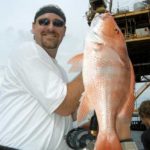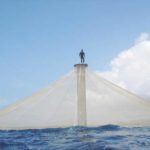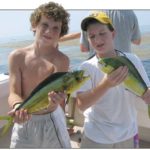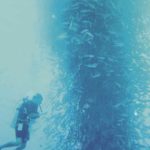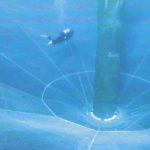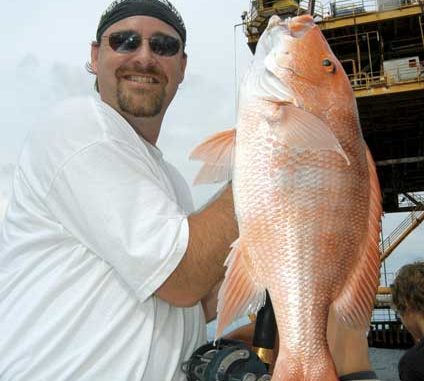
The concept of offshore aquaculture is growing in popularity as wild fish stocks get scarcer. But will the practice cause irreparable harm to Louisiana’s game fish?
Offshore mariculture: Is it going to be the end of traditional recreational and commercial fishing, or is it a progressive, scientifically based step into the 21st century?
If the emotional public testimony received by the Gulf Council in December 2007 is to be believed, it will be the former. If one reads technical material and talks to some scientists and policy-makers, it may likely be the latter.
What has brought the issue of offshore fish farming front and center is the proposed Gulf Council’s “Generic Aquaculture Amendment.” Public hearings held across the five Gulf states in December drew vociferous opposition from an interesting assemblage of unlikely bed-fellows, most especially including environmentalists, recreational fishermen and commercial fishermen.
Comments by Charlie Smith, executive director of the Louisiana Charter Boat Association, encompass the rationale of those opposing the amendment: “When anyone tells me that these things (net pens) are storm-proof, I say, ‘Yeah, just like the New Orleans levees were.’ We have also lost 150 offshore rigs in the Gulf in the last two hurricanes.
“There are no storm-proof structures. Nature is more powerful than anything man has ever done. Then, who cleans up the mess? This is going to be an expensive business. Who cleans up if some of these companies just go out of business? I have witnessed tremendous battles in the Legislature (where Smith is a lobbyist) over issues like this. Who stands to benefit from this? The state of Louisiana doesn’t.
“I have other concerns. Almost everyone I’ve talked to tells me that fish in confined spaces get diseases and parasites. Look at what happened to salmon; the confined salmon attracted sea lice, which then infected the wild fish.
“Pollution is another issue because there will be a lot of feeding and a lot of waste. Shrimp farms in Southeast Asia have been a source of massive pollution.
“Mariculture should not be done in an area of tremendous natural fish production. Do it elsewhere. We have an excellent fishery; why mess with it?”
Additional concerns expressed by Smith and others include the creation of zones that will be off limits to fishing near the farms, the interbreeding of escaped genetically inferior farmed fish with wild fish and a fear of increasing the demand for fishmeal produced from menhaden.
Pete Gerica, a well-known and recognized voice in Louisiana commercial fisheries leadership, echoes some of Smith’s concerns: “I don’t believe their promises that they can control their fish or their cages during a storm. I asked them about marine growths fouling the pens and making them too heavy to keep in place. They assured me that marine growths would be no problem. I don’t believe them. I fish here, and I know how fertile our waters are.”
Gerica adds that if the pens break loose, they “will just be more junk to hit with our boats and trawls, like we have had with the oil companies.” He also expresses misgivings about disease in cultured fish and degraded water bottoms beneath the pens, as well as the fish in the pens competing with wild fish for small forage fish.
A letter of concern about the Gulf of Mexico Generic Aquaculture Amendment sent to the Gulf Council in October had 31 organizations signed on, including 12 from the states of Alaska, California and Washington. The letter expressed their view that the amendment was being rushed through the process, and they asked for a delay.
Inspection of the records, however, reveals that the process can hardly be described as rushed. The Gulf Council instructed their staff to begin development of the Generic Aquaculture Amendment in January 2003, more than five years ago. The first public hearings on the amendment were held four years ago in February 2004.
The roots of the amendment are even older. In 1980, the National Aquaculture Act (NAA) was passed, which established a national aquaculture policy. The NAA “declares that aquaculture has the potential for augmenting existing commercial and recreational fisheries and for producing other renewable resources, thereby assisting the United States in meeting its future food needs and contributing to the solution of world resource problems. It is, therefore, in the national interest, and it is the national policy, to encourage the development of aquaculture in the United States.”
In 1985, the NAA was reauthorized by Congress and renamed the National Aquaculture Improvement Act. In spite of these Congressional actions, still the only legal way to conduct finfish aquaculture in offshore federal waters (the Exclusive Economic Zone, or EEZ) was under a National Marine Fisheries Service Exempted Fishing Permit (EEP). These permits, however, were only for scientific research activity and experimental commercial production of fish.
Then in June 2005, Congress passed the National Offshore Aquaculture Act. It provides to the Secretary of Commerce the authority to establish a regulatory system for offshore aquaculture in the EEZ.
At present, there are only four operating offshore finfish farms in the U.S., and all are in state waters. The four are Cates International Inc. in Hawaii, which grows threadfin; Kona Blue Water Farms, also in Hawaii, which grows amberjack; Snapperfarm Inc., of Puerto Rico, which raises cobia and mutton snapper; and the University of New Hampshire Open Ocean Demonstration Project in New Hampshire, which raises halibut, haddock, summer flounder and cod.
Not everyone is in opposition to the Generic Aquaculture Amendment. Harlon Pearce, owner of Harlon’s LA Fish L.L.C. in Kenner and a Louisiana representative on the Gulf Council, is a proponent of change.
“After being in fisheries businesses for 44 years, I am convinced that we in Louisiana have to get out of the Dark Ages,” he said.
Pearce, who is also chairman of the Louisiana Seafood Promotion and Marketing Board, explains the reasons for his convictions.
“We are threatened with the loss of our culture,” he said. “Our culture was built around food, and seafood is its most important cornerstone. If I thought that we could maintain the fabric of our fishery culture, I wouldn’t be concerned about mariculture.
“I believe that we have enough fish, but we can’t use them. Both commercial and recreational fishermen are being managed into a corner by the feds. There is no way some species are in as much trouble as they say.
“Federal fisheries management has a strong bias toward over-conservation, and it is going to get worse. They have poor data and lack money for stock assessments and so will throttle fisheries down until we can’t make it.
“At the state level, things are just as bad, but for a different reason. Conflict between recreational and commercial interests has been created, when instead they should be pulling together.
“I have to import fish for Louisiana people and our tourists to eat. I hate it! Every dollar I spend out of state is a cash drain on Louisiana. I hate it. At least cultured fish would utilize our state’s infrastructure and generate a positive cash flow for Louisiana.”
Pearce explains why he thinks there is so much negativity toward offshore aquaculture.
“Much of it is just plain fear of change,” he said. “Traditional fishermen fear a loss of fishing grounds, disease and fish escapement. Fear of the unknown is strong.
“This natural fear is exploited by environmentalists. They look for problems that don’t exist. They refuse to work with technologists to solve problems and make things work. Their path is no path. They are just against everything and create a witch’s brew of fear.”
Pearce says the Gulf Council has worked hard to create environmental safeguards in the 500-page draft amendment. Much of what is in the amendment was learned from experience elsewhere, where aquaculture and mariculture (marine aquaculture) have progressed more rapidly than in the U.S. Offshore aquaculture operators are not likely to want to break the rules anyway, he says, as they will lose their permits and the “multi-millions of dollars” they will have invested.
Pearce says his biggest disappointment has been the lack of a voice from the Coastal Conservation Association (CCA) on the issue.
“During the net ban and gamefish debates, CCA vocally supported aquaculture as a way to supply consumers with fish like redfish,” he said. “They said that nets and commercial fishing were unnecessary because aquaculture would fill the gap.
“Now that they have banned nets and have redfish as game fish, I hear that they are tending to be against aquaculture. Their role is critical. If they embrace it, it will solve problems for everyone.”
Finally, Pearce says that people are unnecessarily fearful of an explosion in offshore aquaculture facilities.
“If I thought that there would be a hundred net pens put in tomorrow, I would be nervous that we are going too fast, but that’s not going to happen,” he said. “There is no covey rise of people waiting to spend millions of dollars tomorrow. It is expensive and may not even be feasible, although we need to look at it.”
An inspection of the history of experimental offshore aquaculture operations shows there to be some truth to his statement.
The first offshore finfish aquaculture project was conducted in state waters off of the Texas coast in the late 1980s and early 1990s by Texas Sea Grant, using an Occidental Petroleum Corporation platform. The ocean-raised redfish from the project cost three times as much to raise as their market value, and severe storms damaged some of the cages.
Sea Pride Industries followed during roughly the same time period as the Texas project. They received a permit from the state of Mississippi to set up on a 40-acre site, three miles south of Horn Island. They couldn’t raise enough funds, and the project fizzled.
In 1994, the Watermark Corporation proposed a finfish aquaculture project for Grand Isle Blocks 75 and 76 off of Louisiana. Their application was returned to them by the U.S. Army Corps of Engineers in 1995.
Also in that same year, Marine Artificial Habitats Inc. proposed to establish a privately managed artificial reef and processing plant in South Timbalier Block 176, off of the Louisiana coast. The Corps denied the application.
Then in 1997, SeaFish Mariculture L.L.C. received a Corps permit and an EFP permit to raise red drum, greater amberjack and red snapper in cages attached to working oil and gas platforms 48 nautical miles south-southwest of Freeport, Texas. Although they successfully raised one crop of red drum to market size, the project did not make the progress projected. One cage was destroyed in 1998 by storms, and another was damaged in an attempt to move it. SeaFish Mariculture ended the project in July 1999, citing increased gas production at the site as the reason.
In September 1998, the Gulf Marine Institute of Technology, in partnership with BioMarine Technologies Inc., received approval from Texas agencies to grow finfish, using a 500-acre, four-platform oil and gas complex in Texas waters 10 miles southwest of the Matagorda Peninsula. The permitting process quickly degenerated into litigation against the state, which, in 2005, the partners apparently won. They have yet to begin aquaculture operations.
Finally, in 2003, Florida Offshore Aquaculture Inc. applied for an EFP for the culture of red snapper, Florida pompano, cubera snapper, greater amberjack and mahi mahi. The project was to use four submerged cages located 33 miles west-southwest of Johns Pass, Florida. It was concluded that the applicants lacked the experience to comply with EFP conditions and had submitted false information on the application. The Gulf Council recommended that the EFP application be denied.
So, where is the truth? Part two, next month discusses the science of whether offshore aquaculture is boon, bane or boondoggle.
